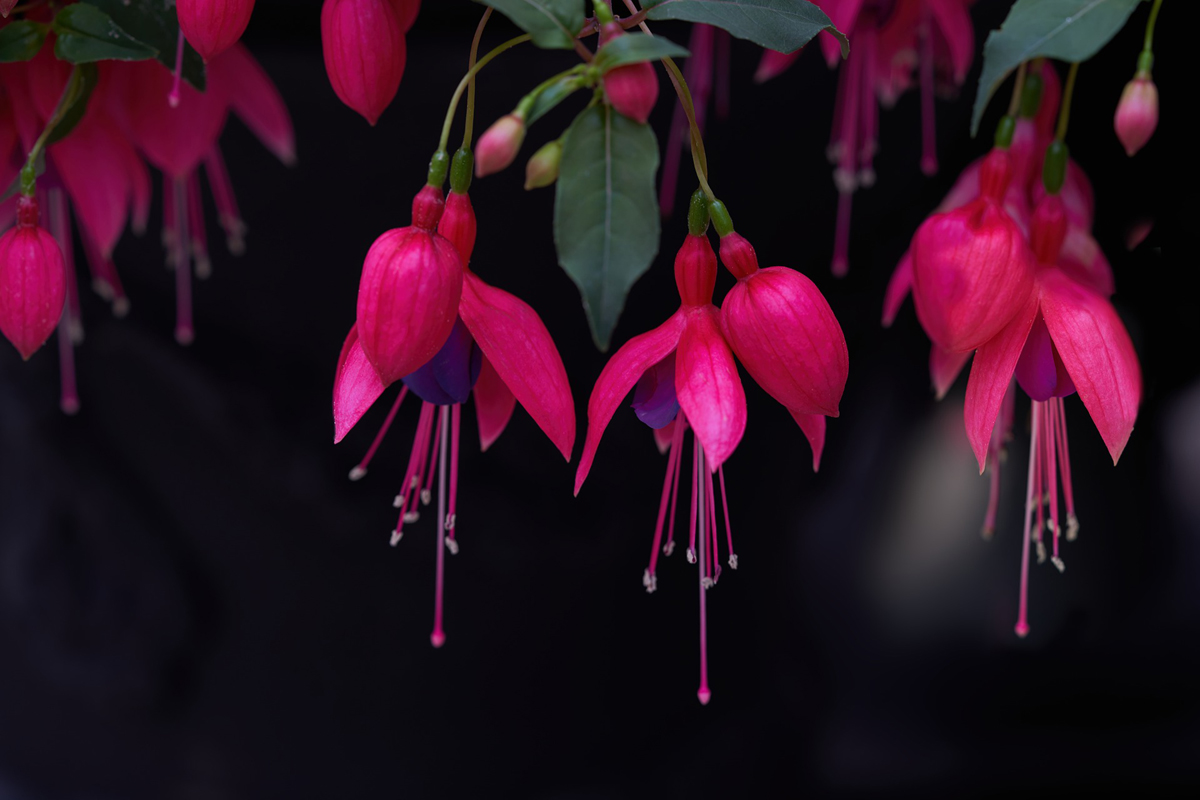This is a comprehensive article about growing and caring for fuchsia plants. It covers topics such as the various types of fuchsias, soil and lighting conditions, pruning techniques, and propagation methods. Readers can learn from the extensive knowledge and experience shared in this article to successfully cultivate fuchsias in their home garden.
(pronounced: fyoo-shuh)
Named after Leonhard Fuch, German botanist. Origin: Mexico, Argentina and Chile
(Also known as: Lady’s eardrop)
Family: Onagraceae
Flower Type: Showy drooping, shows pistols and stamens.
Habit: Weeping, rounded with trailing branches.
Seasonal: Annual
Light: Partial shade, shade. Likes part shade and kept damp.
Size: 3- 5 feet trailing
Color: White, pink, red, purple, lilac and combinations
Blooming: Summer. To promote heavy bloom pinch back.
Growth Rate: Moderate
Soil Type: 75% loam, 15 % coarse sand, 10 % leaf mold. Keep soil damp but not wet.
Leaves: Leaves are opposite, slightly serrated.
Special Assets: Attracts hummingbirds.
Medicinal Use: None Known
Edible Uses: *(Fuchsia splendens) Fruit – raw. A juicy berry, it is tart with a peppery after-taste. Some what lemon-like with no noticed aftertaste. The fruit can be up to 40mm long and 8mm wide. [source: Plants for a Future]
Landscape Use: Used for hanging baskets or container planting. Can be trained as a small tree.
Propagation: Seeds, cuttings in spring or fall.
Care: Cannot withstand wind. Cut back branches by 2/3 in the fall, take indoors and put in a well lit window. Mist leaves in morning and afternoon in very hot weather. Deadhead when needed.
Water: Cannot tolerate drought.
Disease/ Insects: Aphids, whitefly, root weevil, caterpillars, red spider mite
USDA Hardiness Zone: 8-10
Flower Language: Meaning: Humble love
The Author:
Pioneerthinking.com – Ingredients for a Simple Life
